Nikon AF-S Nikkor 105mm f/1.4E ED Review

Introduction
The AF-S Nikkor 105mm f/1.4E ED is an ultra-fast telephoto prime lens for Nikon full-frame DSLR cameras. The AF-S Nikkor 105mm f/1.4E ED features 14 optical elements in 9 groups, including three ED glass elements, and an iris diaphragm with 9 rounded blades. The Silent Wave Motor provides smooth and quiet auto-focus with full-time manual focus override, while Nikon's Nano Crystal Coating significantly reduces instances of ghosting and flare. The AF-S Nikkor 105mm f/1.4E ED lens is available now priced at £2,049.99 / €2,419.00 / $2,199.95 in the UK, Europe and the US, respectively.
Ease of Use
Tipping the scales at a whopping 985 grams and measuring 10.6cms in length (without the lens hood fitted), the Nikon AF-S Nikkor 105mm f/1.4E ED is a very big and heavy short-telephoto prime lens. Coupled with the range-topping Nikon D810 camera, as shown in the photos below, the overall kit weighs almost 2kg, which mostly limits it to life in the studio.
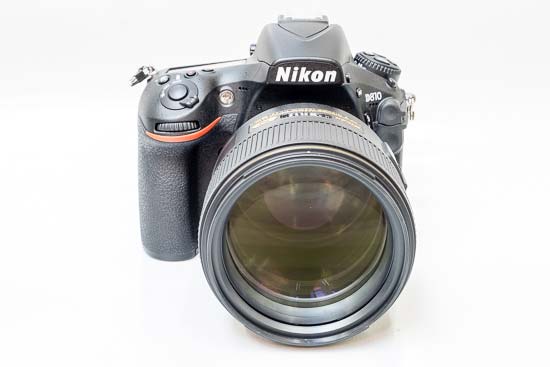 The AF-S Nikkor 105mm f/1.4E ED mounted on the Nikon D810
The AF-S Nikkor 105mm f/1.4E ED mounted on the Nikon D810
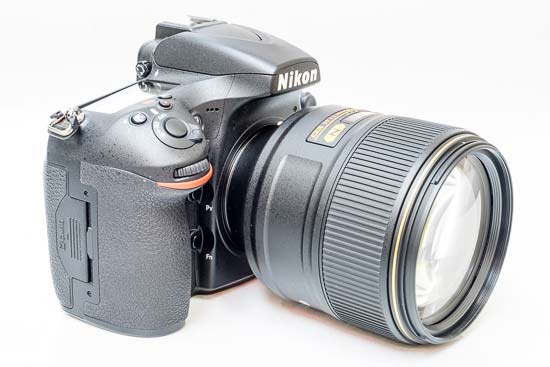 The AF-S Nikkor 105mm f/1.4E ED mounted on the Nikon D810
The AF-S Nikkor 105mm f/1.4E ED mounted on the Nikon D810
 The AF-S Nikkor 105mm f/1.4E ED mounted on the Nikon D810
The AF-S Nikkor 105mm f/1.4E ED mounted on the Nikon D810
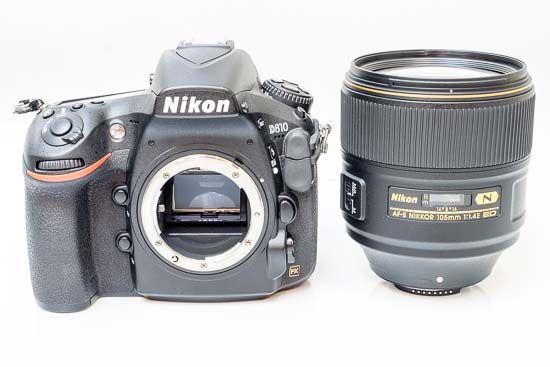 The AF-S Nikkor 105mm f/1.4E ED alongside the Nikon D810
The AF-S Nikkor 105mm f/1.4E ED alongside the Nikon D810
As you would expect from a lens that costs this much, build quality is very good. The lens feels solid in your hand, even if the outer barrel and the massive 82mm filter thread appear to be plastic. The focusing ring is wide, ridged and rubberised. As this is a G series lens, it has no aperture ring - no big deal unless you wanted to use it on a very old film body.
The lens features a useful distance scale in meters and feet, although there's no accompanying DOF scale.
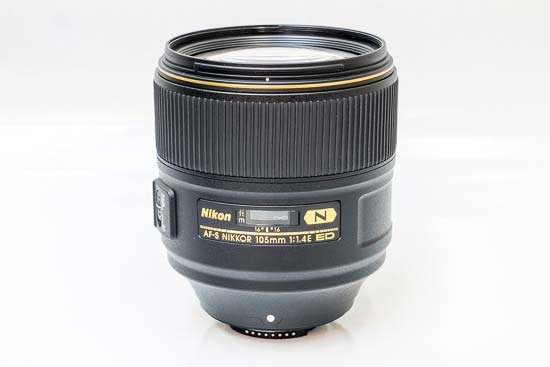 Side of the AF-S Nikkor 105mm f/1.4E ED
Side of the AF-S Nikkor 105mm f/1.4E ED
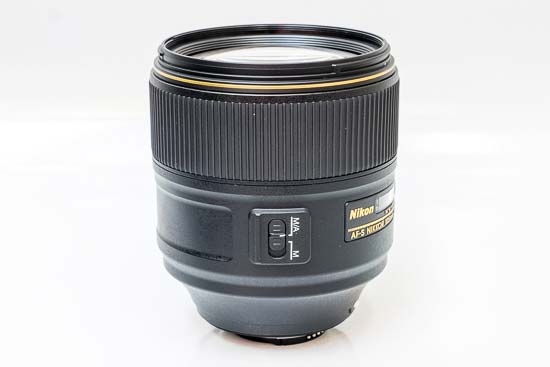 Side of the AF-S Nikkor 105mm f/1.4E ED
Side of the AF-S Nikkor 105mm f/1.4E ED
Since the AF-S Nikkor 58mm f/1.4 does not have Vibration Reduction or a focus limiter, the only control on the lens barrel is a focus mode switch with the usual M/A and M settings.
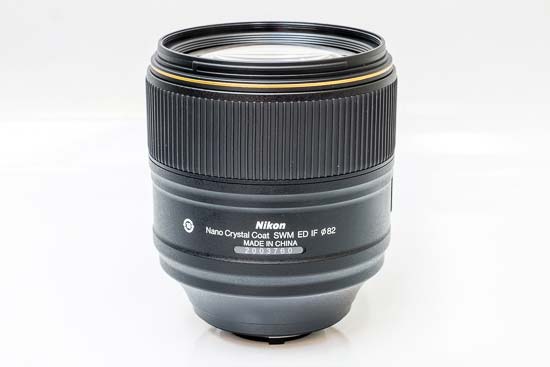 Side of the AF-S Nikkor 105mm f/1.4E ED
Side of the AF-S Nikkor 105mm f/1.4E ED
 Front of the AF-S Nikkor 105mm f/1.4E ED
Front of the AF-S Nikkor 105mm f/1.4E ED
The Nikon AF-S Nikkor 105mm f/1.4E ED is sealed against dust and moisture, so it's a great companion for similarly sealed bodies even when they are used in dusty locales or less-than-ideal weather conditions.
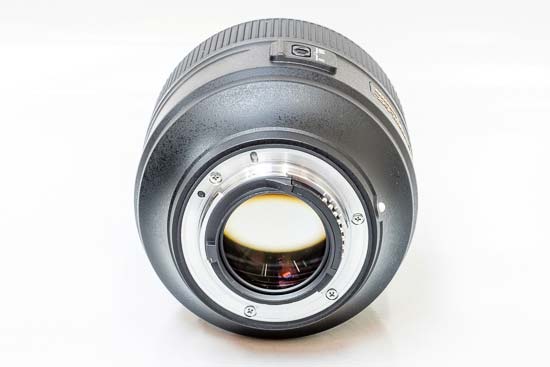 Rear of the AF-S Nikkor 105mm f/1.4E ED
Rear of the AF-S Nikkor 105mm f/1.4E ED
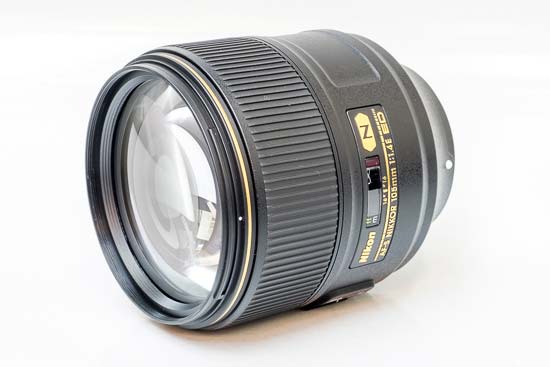 Front of the AF-S Nikkor 105mm f/1.4E ED
Front of the AF-S Nikkor 105mm f/1.4E ED
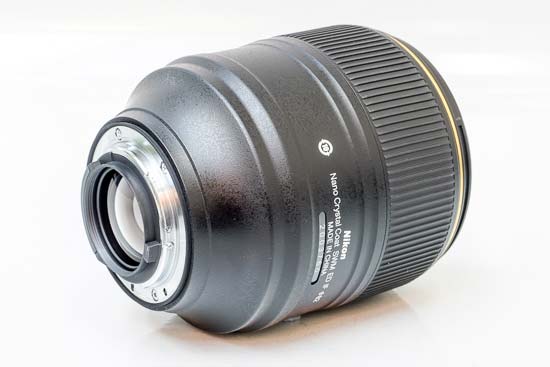 Rear of the AF-S Nikkor 105mm f/1.4E ED
Rear of the AF-S Nikkor 105mm f/1.4E ED
The lens ships with the dedicated HB-79 lens hood and a cloth lens bag.
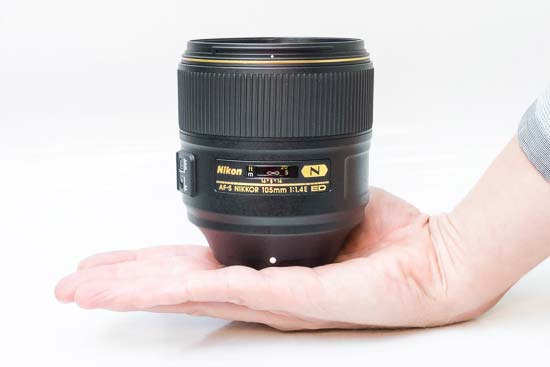 The AF-S Nikkor 105mm f/1.4E ED in-hand
The AF-S Nikkor 105mm f/1.4E ED in-hand
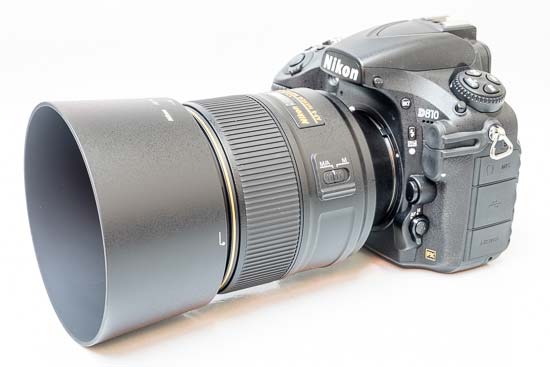 The AF-S Nikkor 105mm f/1.4E ED with the supplied lens hood fitted
The AF-S Nikkor 105mm f/1.4E ED with the supplied lens hood fitted
Auto-focus
The Nikon AF-S Nikkor 105mm f/1.4E ED lens features a Silent Wave Motor (SWM) that allows near-silent auto-focusing on all Nikon DSLR cameras. Importantly, this solution allows instant manual override even when the focus mode switch is in the M/A position. Focusing is fully internal, meaning the length of the lens always remains constant, and the front of the lens does not rotate on focus. This is good news for those who use polarisers or ND grads on a regular basis.
In use, we found the focusing to be indeed very quiet, and pretty fast - but certainly not instantaneous - with the lens mounted to a Nikon D810 body.
Chromatic Aberrations
Chromatic aberrations, typically seen as blue or purple fringes along contrasty edges, are very well controlled with this lens - the examples below show the worst-case scenario.
 |
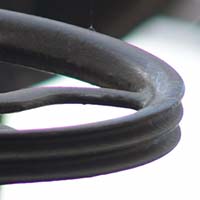 |
Light Fall-off and Distortion
With the lens wide open at f/1.4, you can only see some light fall-off in the corners and along the frame edges. Stopping down helps, although to completely get rid of this phenomenon, you will need to use an f-stop of f/4 or smaller. There's also some very slight pin-cushion distortion.

Macro
The Nikon AF-S Nikkor 105mm f/1.4E ED is not a macro lens. The closest focusing distance is 1m, and Nikon quotes a maximum magnification of 0.13x for the lens. The following example illustrates how close you can get to the subject, in this case a CompactFlash card.
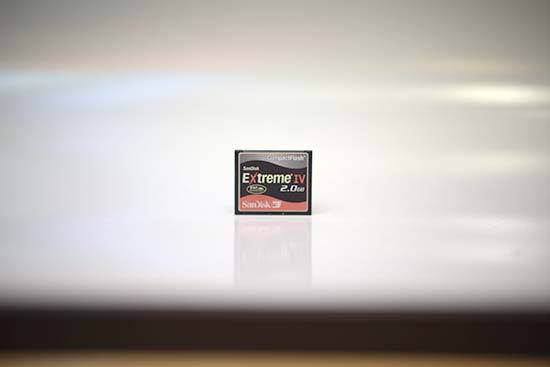 Close-up performance
Close-up performance
Bokeh
Bokeh is a word used for the out-of-focus areas of a photograph, and is usually described in qualitative terms, such as smooth / creamy / harsh etc. One of the reason to buy a fast lens is to be able to isolate the subject from the background. Nikon was apparently very much aware of this requirement, as they employed an iris diaphragm with 9 rounded blades for a pleasing rendering of the out-of-focus highlights. Based on what we have seen, we can say that they largely succeeded. Below you'll find some examples, but you are also encouraged to check out our sample images.
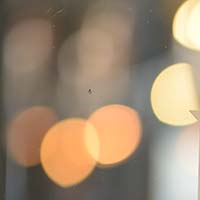 |
 |
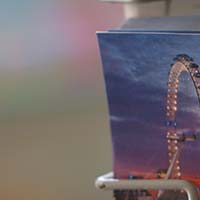 |
 |
Sharpness
In order to show you how sharp this lens is, we are providing 100% crops on the following page.
